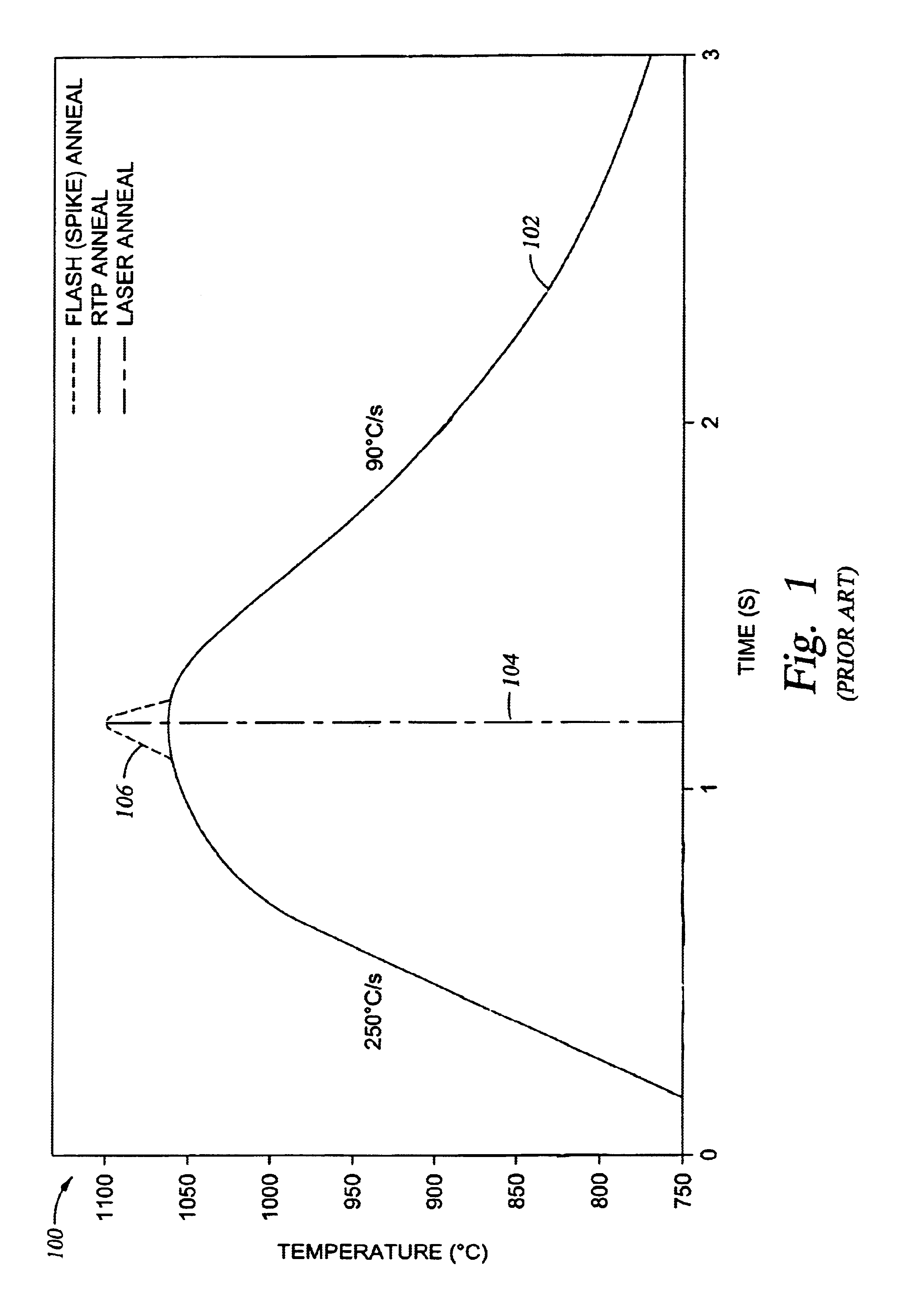Thermal flux processing by scanning
a technology of flux processing and scanning, applied in the field of thermal processing, can solve the problem of not being able to meet the rate requirements, reduce the total radiated power requirement, and shorten the annealing time
- Summary
- Abstract
- Description
- Claims
- Application Information
AI Technical Summary
Benefits of technology
Problems solved by technology
Method used
Image
Examples
Embodiment Construction
[0026]FIG. 2A is a side view of an apparatus 200 for thermally processing a semiconductor substrate, according to an embodiment of the invention. For the practice of the invention, the preferred thermal process is annealing and annealing will be described throughout the remainder of the Figures. The apparatus 200 comprises a continuous wave electromagnetic radiation source 202, a stage 216 configured to receive a semiconductor substrate 214 thereon, and optics 220 disposed between the continuous wave electromagnetic radiation source 202 and the stage 216.
[0027]In a preferred embodiment, the semiconductor substrate 214 is any substrate having high thermal conductivity, such as a single crystal silicon substrate, silicon on insulator (SOI), Silicon Germanium or alloys thereof, or the like. It should be appreciated that the semiconductor substrate 214 is not a glass or quartz substrate with a silicon layer thereon, as used for manufacturing thin film transistors (TFT). Thermal flux pro...
PUM
| Property | Measurement | Unit |
|---|---|---|
| power | aaaaa | aaaaa |
| power | aaaaa | aaaaa |
| power | aaaaa | aaaaa |
Abstract
Description
Claims
Application Information
 Login to View More
Login to View More - R&D
- Intellectual Property
- Life Sciences
- Materials
- Tech Scout
- Unparalleled Data Quality
- Higher Quality Content
- 60% Fewer Hallucinations
Browse by: Latest US Patents, China's latest patents, Technical Efficacy Thesaurus, Application Domain, Technology Topic, Popular Technical Reports.
© 2025 PatSnap. All rights reserved.Legal|Privacy policy|Modern Slavery Act Transparency Statement|Sitemap|About US| Contact US: help@patsnap.com



